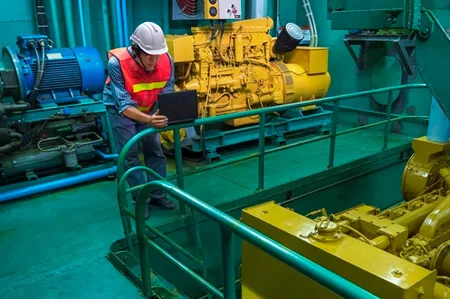 Proper engineering of pressure relief valves is critical for ensuring that fluid transport and handling systems, including hydraulic, pneumatic, process cooling, and steam systems, can stand up to the rigors of everyday use while preventing and mitigating the risks of extreme pressure scenarios.
Proper engineering of pressure relief valves is critical for ensuring that fluid transport and handling systems, including hydraulic, pneumatic, process cooling, and steam systems, can stand up to the rigors of everyday use while preventing and mitigating the risks of extreme pressure scenarios.
Valve Engineering plays an essential role in not only keeping piping systems functioning smoothly and consistently, but also in keeping personnel safe, preventing severe damage to equipment and infrastructure, and minimizing the downtime and operational disruptions that come with emergency repairs or replacements that can result from preventable overpressure and underpressure incidents.
The Risks of Overpressure and Underpressure
Overpressure is, in many ways, an engineer’s worst nightmare. When the pressure in a system exceeds its design limits, you run the risk of process disruptions, the loss of valuable materials from leakage or outgassing, and excessive wear on your equipment that can significantly shorten the operational lifetime of your system—and these are some of the best-case scenarios.
Without adequate pressure relief systems, the strain of overpressure can cause structural failures in vessels, pipes, and other components, such as leaks and ruptures. Catastrophic failures can even lead to explosions that can severely injure nearby personnel in addition to damaging valuable parts and surrounding infrastructure or potentially releasing hazardous materials into the surrounding environment.
That’s not to discount the risks of underpressure, either—too little pressure or negative pressure running through a system can lead to catastrophic structural collapses or implosion, material deformation, air ingress, fluid boiling, and contaminant ingress that can similarly disrupt processes and put personnel at risk of health issues.
Pressure regulation not only prevents catastrophic underpressure and overpressure situations but also keeps pressure from rising or dropping outside of operational norms to ensure that flow control systems continue running smoothly with no disruptions to essential and mission-critical processes.
How SRVs and PRVs Manage Pressure
Precisely engineered valves afford these essential components of piping systems the power to regulate and control the flow of liquids and gases within a system by opening, closing, or partially obstructing the passage through which these fluids flow. With the capacity to regulate, isolate, and divert the flow of fluids, certain types of valves provide protection from the various risks that come from overpressure and underpressure systems.
Proper valve design ensures that pressure safety valves (PSVs) and pressure reducing valves (PRVs) can do their jobs. Let’s take a look at the essential role these valves play in piping systems:
PSVs and Overpressure
Pressure safety valves protect equipment and systems from the potentially catastrophic effects of overpressure. PSVs open suddenly once the pressure in a system hits a certain level to immediately stop the buildup of pressure by releasing excess fluid.
PSVs are installed at points in a system where overpressure presents the greatest threat to equipment and personnel and operate in response to abnormal or emergency systems. These pressure relief valves are engineered to immediately act when the pressure in your piping system rises to a certain level, so it is important to choose PSVs that have been designed to act precisely when your piping system needs them. Using the wrong PSV leads to valves that will either kick into action too soon or too late, causing process disruptions or severely damaging your equipment.
PRVs and Pressure Regulation
Unlike PSVs, PRVs prevent both overpressure and underpressure in non-emergency situations. Rather than opening suddenly to divert the flow of fluids and immediately reduce pressure, PRVs open and close gradually and provide pressure relief by regulating incoming pressure from upstream sources, thus maintaining a constant pressure throughout your piping system’s downstream infrastructure.
Also unlike PSVs, PRVs are user-adjustable, instead of being designed with a fixed level of overpressure to respond to. An operator or system designer can adjust PRVs based on the desired downstream pressure requirements of their system. For this reason, PRVs are best installed within a flow control system where precise and variable pressure control is required.
The Ultimate in Pressure Relief Applications
For three generations and counting, Dante Valve has been committed to manufacturing and distributing military-specification (mil-spec) pressure relief valves with an eye toward unimpeachable quality.
Our valve offerings include our in-house Danco pressure relief valves, in addition to other leading brands of engineered products, including Kunkle industrial relief valves and TRAC regulating, reducing, and temperature-regulating valves.
With our CNC machining services, we also provide valve customization and repair services to ensure long-lasting and reliable flow control and pressure relief for mission-critical hydraulic, pneumatic, steam, and water transport systems in maritime environments. Request a quote online or call 888-212-3222.

